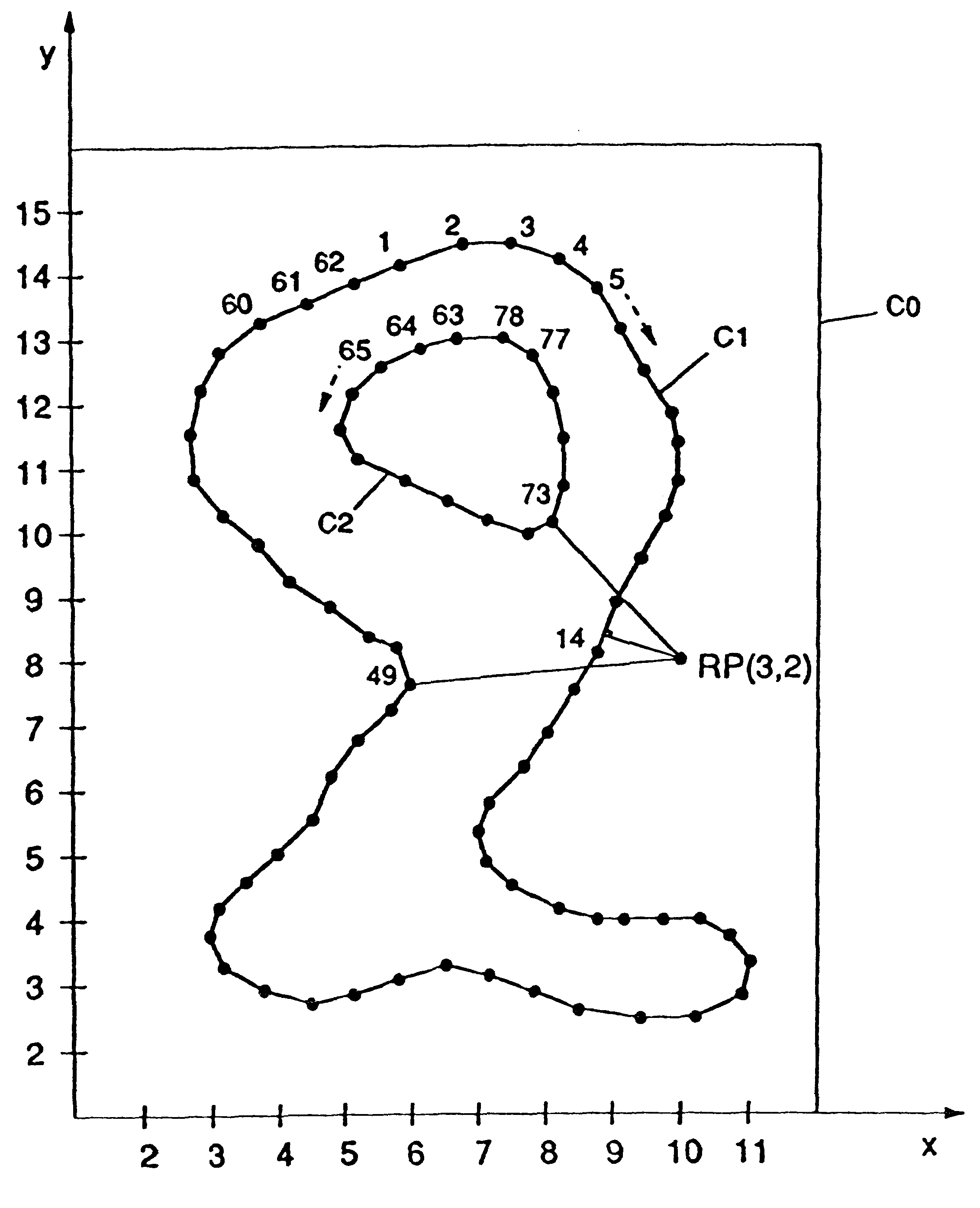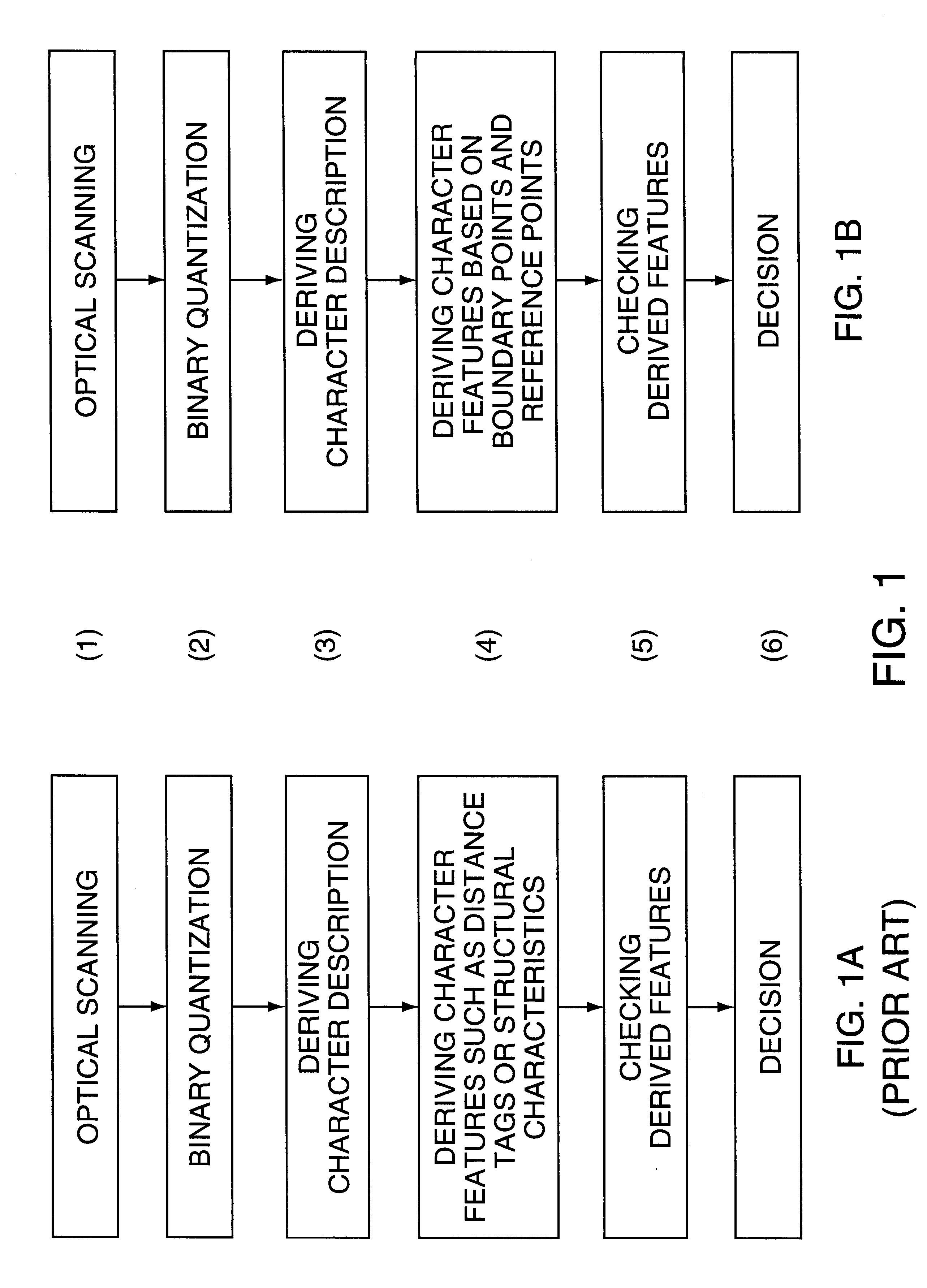Method for deriving character features in a character recognition system
a character recognition and feature technology, applied in image analysis, instruments, computing, etc., can solve the problems of difficult to apply decision makers in recognition, too general for acceptable letter recognition, and variable number of features on which recognition is based
- Summary
- Abstract
- Description
- Claims
- Application Information
AI Technical Summary
Problems solved by technology
Method used
Image
Examples
Embodiment Construction
The invention relates to a method for deriving character features for use in a recognition system for recognizing characters, such as, for example, printed or handwritten digits and letters. Starting from a description of a character to be recognized, the recognition proceeds on the basis of a number of features, derived from suitably determined boundary points, of the described character. The departure between the present invention and the prior art can be understood by comparing FIG. 1b to FIG. 1a. As evidenced by this comparison, the primary difference between the subject matter of the present invention and the prior art relates to process step (4), that is, the step wherein character features are derived. As already discussed in Section A.2. (Prior art), the character features conventionally derived merely included distance tags or structural characteristics, neither of which provided the resolution required for character recognition within acceptable limits. With respect to the...
PUM
 Login to View More
Login to View More Abstract
Description
Claims
Application Information
 Login to View More
Login to View More - R&D
- Intellectual Property
- Life Sciences
- Materials
- Tech Scout
- Unparalleled Data Quality
- Higher Quality Content
- 60% Fewer Hallucinations
Browse by: Latest US Patents, China's latest patents, Technical Efficacy Thesaurus, Application Domain, Technology Topic, Popular Technical Reports.
© 2025 PatSnap. All rights reserved.Legal|Privacy policy|Modern Slavery Act Transparency Statement|Sitemap|About US| Contact US: help@patsnap.com



